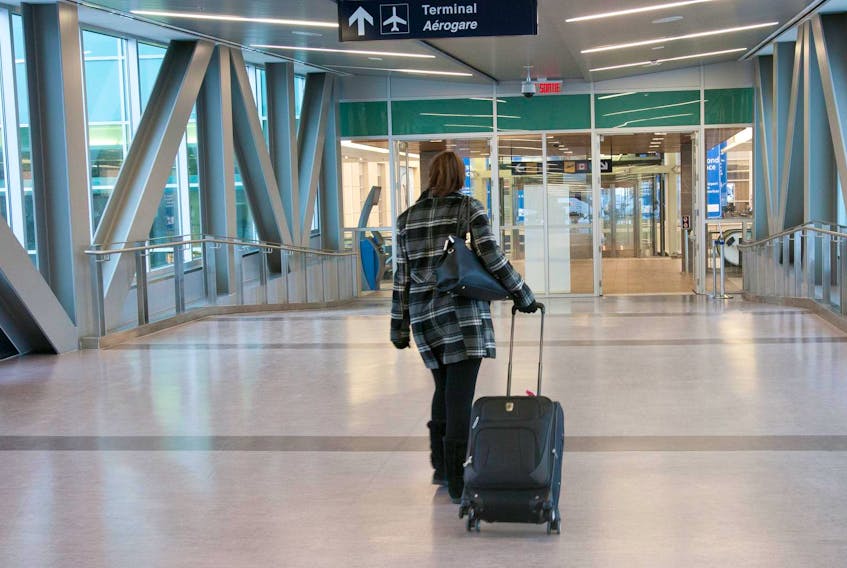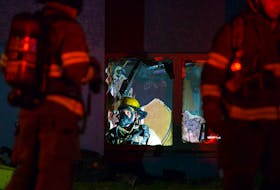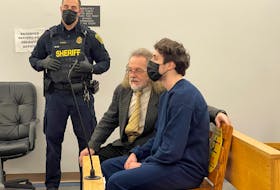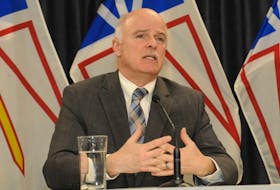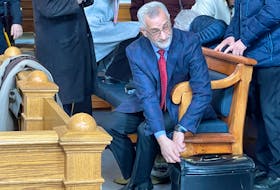Temperature screenings will be done at 15 Canadian airports, including Halifax and St. John’s, by the end of September.
The federal government announced Friday a phased-in approach to implementing temperature screenings, first for air passengers travelling to Canada, then for those travelling from Canada, and finally for those travelling within Canada.
“Physical distancing is still the best way to protect yourself and others, of course, (but) there are some places, like on flights, where it’s not always possible to keep two metres apart. That’s exactly why we’ve made it mandatory for travellers and staff to wear masks. We’ve also worked with airlines and airports on standards they should have in place, whether that’s enhanced cleaning or putting in distancing measures as people wait in line,” Prime Minister Justin Trudeau said Friday morning.
“This screening will add yet another layer of protection.”

Speaking at a news conference later in the day, Transport Minister Marc Garneau laid out the implementation plan for temperature checks.
Starting later this month, air operators will be required to conduct temperature screenings at the point of departure for all passengers on international flights entering Canada. This will apply regardless of the passenger’s point of origin.
Border closures announced in March are still in effect, and only those who are Canadian citizens, permanent residents, immediate family members of those two categories, essential workers such as those in the airline industry, diplomats and politicians, temporary foreign workers and some international students can enter Canada by air travel.
By the end of July, Garneau said, the Canadian Air Transport Security Authority (CATSA), a federal Crown corporation, will be responsible for temperature screening as part of the departure procedure for domestic, transporter and international flights.
Airport and aviation personnel will also have their temperature checked by CATSA before entering the restricted area of airports, he said.
This is in addition to health, symptom and exposure screening questions that every passenger must answer, as well as on-flight symptom protocol.
To facilitate this, by the end of July, Garneau said, Canada is aiming to have temperature screening stations set up in the departure sections of Canada’s four largest airports, the only airports that are currently accepting international passengers: Toronto’s Pearson International Airport, Vancouver International Airport, Calgary International Airport and Montreal’s Pierre Elliott Trudeau International Airport.
By the end of September, temperature screenings will be placed in the next 11 busiest airports in Canada, including Halifax’s Stanfield International Airport and St. John’s International Airport.
“All passengers who have an elevated temperature confirmed after a second reading will not be permitted to continue their travel and will be asked to rebook after 14 days,” Garneau said.
Garneau could not provide a cost estimate for the new measures, but said they are expected to be modest, and CATSA will be responsible for purchasing the equipment, which it should be able to do within its existing budget.
There is a variety of equipment on the market that can be used for temperature checking, Garneau said, and whatever is chosen for Canada must meet a minimum precision standard.
Why now?
After months of downplaying the effectiveness of temperature checks for travellers, officials faced questions about why the government has chosen to implement this technology now, especially considering a 2005 federal study co-authored by Dr. Thereasa Tam, now Canada’s chief public health officer, found that similar measures implemented during the 2003 SARS epidemic, costing taxpayers approximately $7.5 million, failed to find a single instance of the virus.
“Rather than investing in airport screening measures to detect rare infectious diseases, investments should be used to strengthen screening and infection control capacities at points of entry into the health-care system,” the study stated.
Speaking with reporters, Garneau said COVID-19 is a different scenario.
“(SARS) involved very small numbers. We are talking here now about millions of people in virtually every country in the world, so it is a different situation,” he said.
“I can tell you there is a high probability that if someone has COVID-19 and if they have a fever and they try to fly, we will be able to detect it.”
Garneau also noted the International Air Transport Association and the International Civil Aviation Organization recommend across-the-board temperature screenings, and many other countries have already put in place a similar program or are considering it. Both Air Canada and WestJet have put in temperature screening measures.
Also responding to questions from media, Trudeau said scientists have been clear that people with fevers should not travel on international airlines during a pandemic, but have also shown that temperature checks are not a sure-fire way of screening out people who are infected by the coronavirus.
“It’s not the panacea. It’s not a 100 per cent solution,” he said. “It’s an extra layer of safety to encourage people who might feel sick to stay at home, and not travel and put others at risk.”

